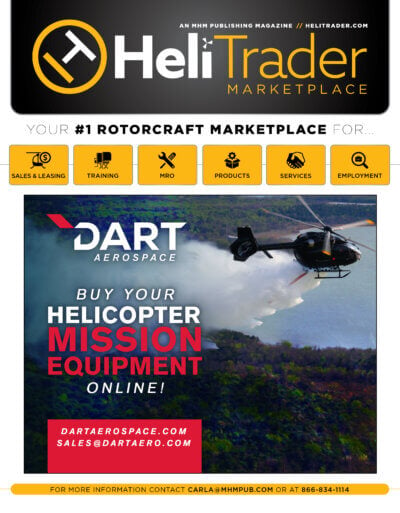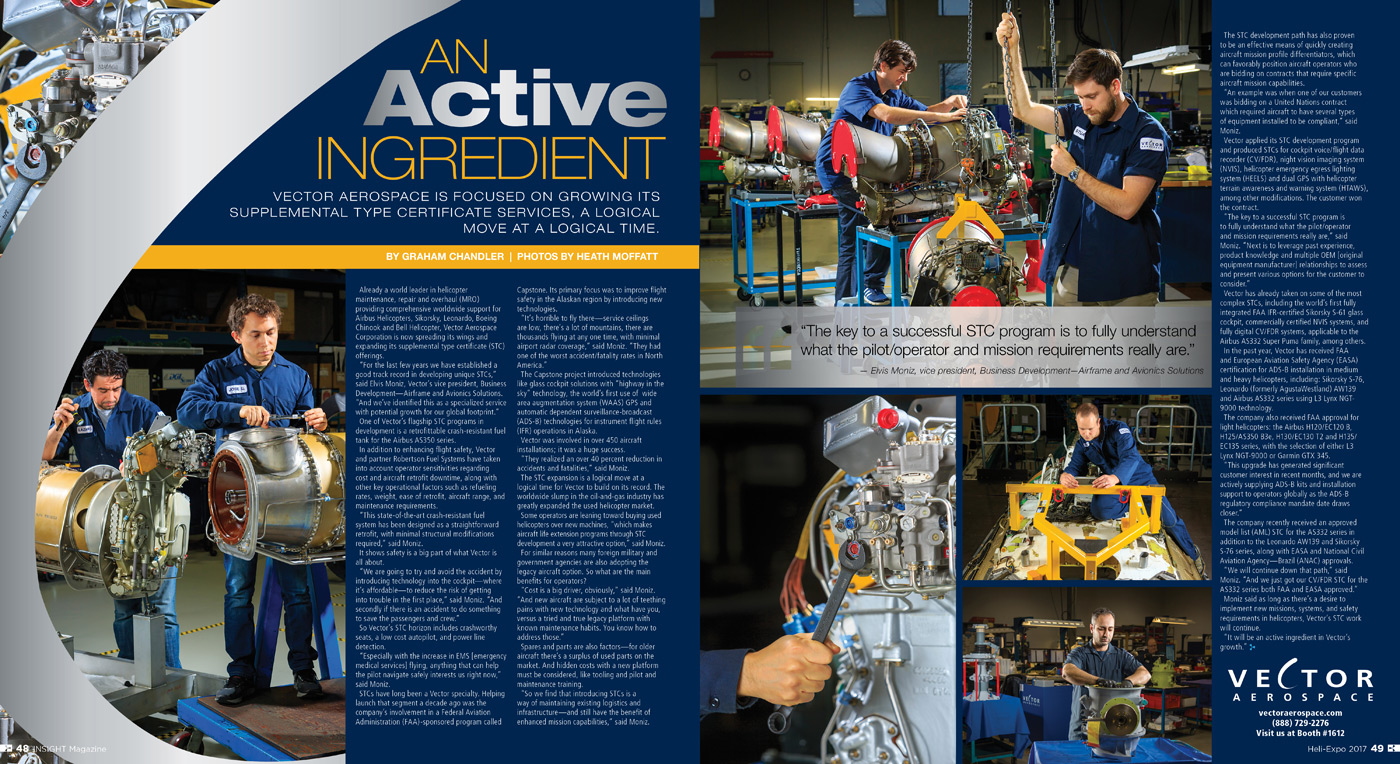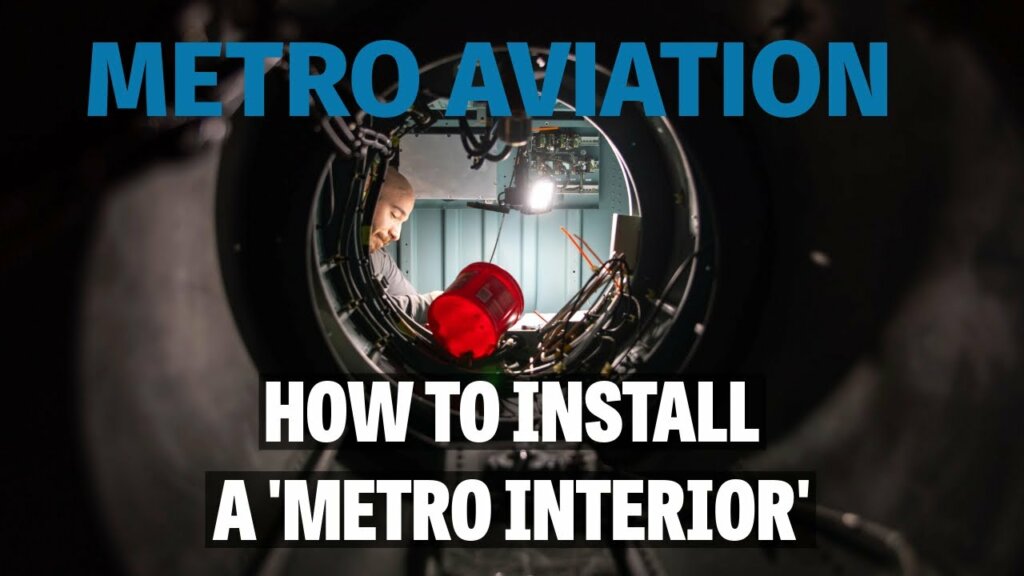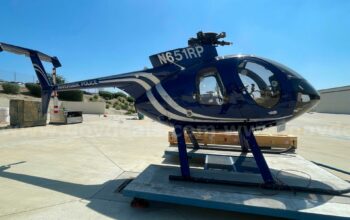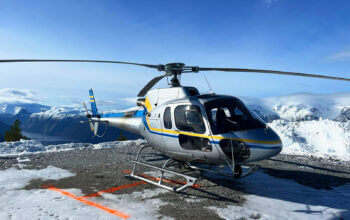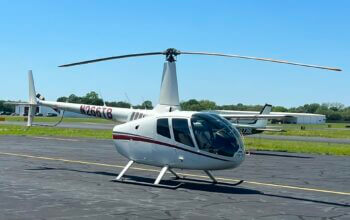Already a world leader in helicopter maintenance, repair and overhaul (MRO) providing comprehensive worldwide support for Airbus Helicopters, Sikorsky, Leonardo, Boeing Chinook and Bell Helicopter, Vector Aerospace Corporation is now spreading its wings and expanding its supplemental type certificate (STC) offerings.
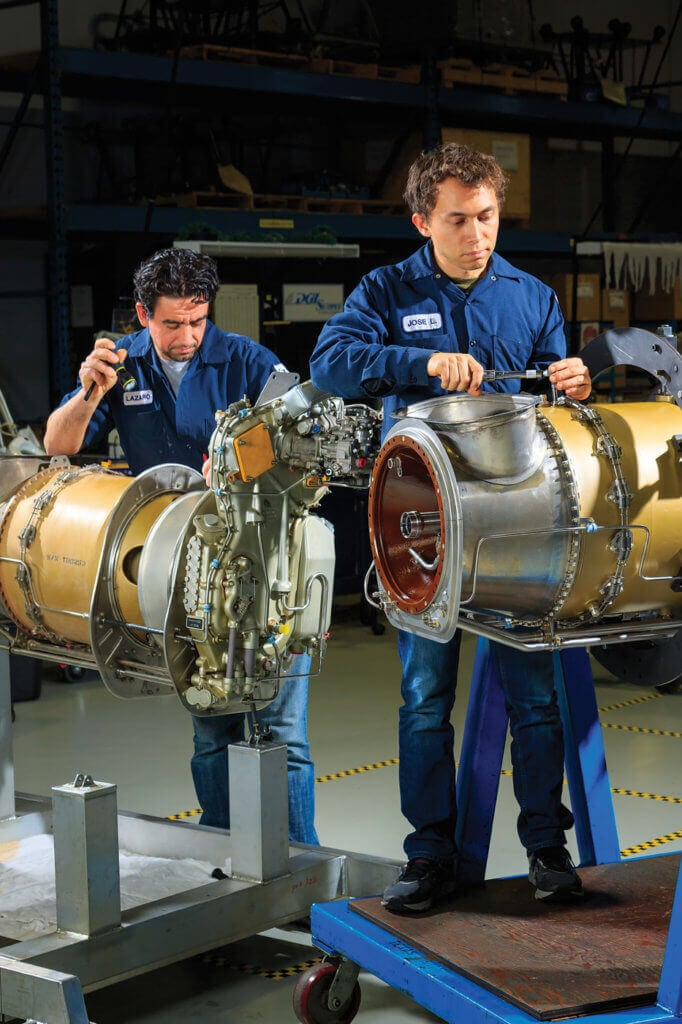
“For the last few years we have established a good track record in developing unique STCs,” said Elvis Moniz, Vector’s vice president, Business Development — Airframe and Avionics Solutions. “And we’ve identified this as a specialized service with potential growth for our global footprint.”
One of Vector’s flagship STC programs in development is a retrofittable crash-resistant fuel tank for the Airbus AS350 series.
In addition to enhancing flight safety, Vector and partner Robertson Fuel Systems have taken into account operator sensitivities regarding cost and aircraft retrofit downtime, along with other key operational factors such as refueling rates, weight, ease of retrofit, aircraft range, and maintenance requirements.
“This state-of-the-art crash-resistant fuel system has been designed as a straightforward retrofit, with minimal structural modifications required,” said Moniz.
It shows safety is a big part of what Vector is all about.
“We are going to try and avoid the accident by introducing technology into the cockpit — where it’s affordable — to reduce the risk of getting into trouble in the first place,” said Moniz. “And secondly if there is an accident to do something to save the passengers and crew.”
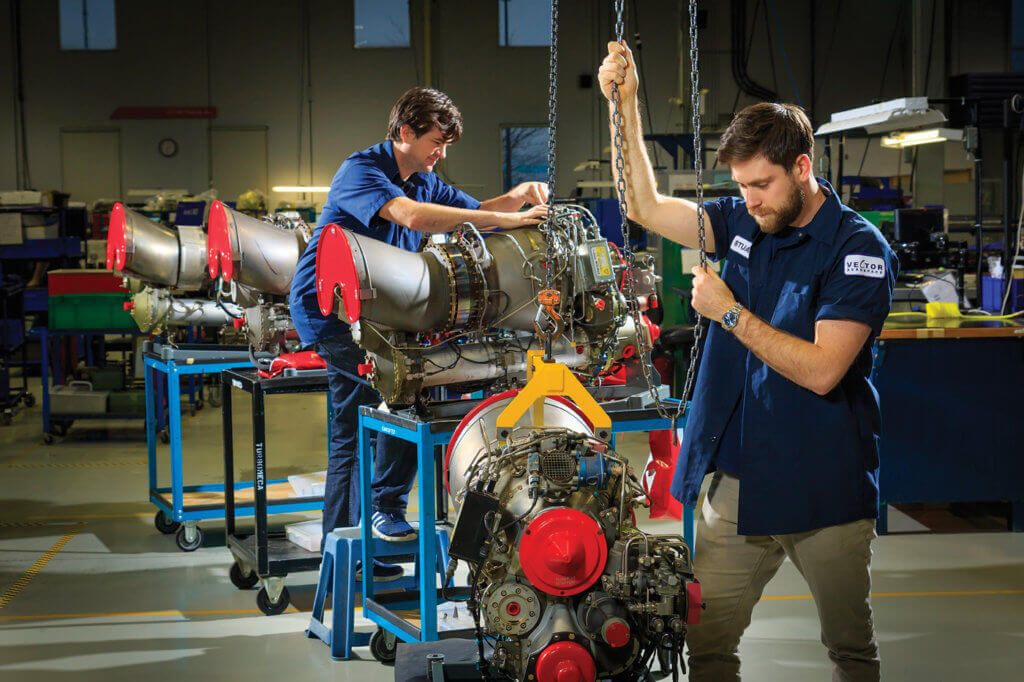
So Vector’s STC horizon includes crashworthy seats, a low cost autopilot, and power line detection.
“Especially with the increase in EMS [emergency medical services] flying, anything that can help the pilot navigate safely interests us right now,” said Moniz.
STCs have long been a Vector specialty. Helping launch that segment a decade ago was the company’s involvement in a Federal Aviation Administration (FAA)-sponsored program called Capstone. Its primary focus was to improve flight safety in the Alaskan region by introducing new technologies.
“It’s horrible to fly there — service ceilings are low, there’s a lot of mountains, there are thousands flying at any one time, with minimal airport radar coverage,” said Moniz. “They had one of the worst accident/fatality rates in North America.”
The Capstone project introduced technologies like glass cockpit solutions with “highway in the sky” technology, the world’s first use of wide area augmentation system (WAAS) GPS and automatic dependent surveillance-broadcast (ADS-B) technologies for instrument flight rules (IFR) operations in Alaska.
Vector was involved in over 450 aircraft installations; it was a huge success.
“They realized an over 40 percent reduction in accidents and fatalities,” said Moniz.
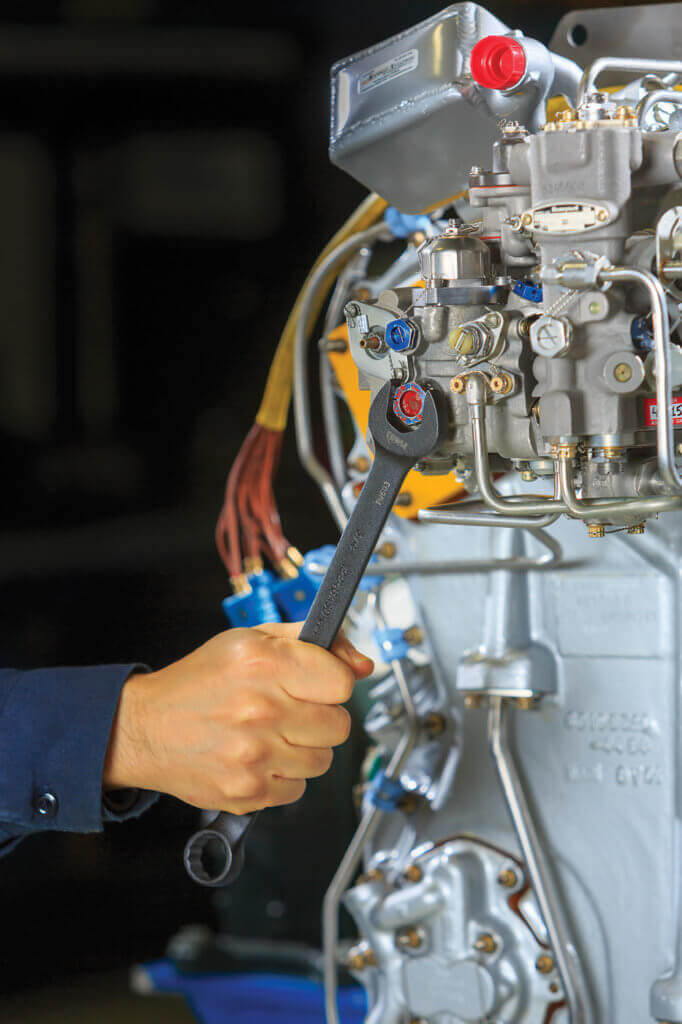
The STC expansion is a logical move at a logical time for Vector to build on its record. The worldwide slump in the oil-and-gas industry has greatly expanded the used helicopter market.
Some operators are leaning toward buying used helicopters over new machines, “which makes aircraft life extension programs through STC development a very attractive option,” said Moniz.
For similar reasons many foreign military and government agencies are also adopting the legacy aircraft option. So what are the main benefits for operators?
“Cost is a big driver, obviously,” said Moniz. “And new aircraft are subject to a lot of teething pains with new technology and what have you, versus a tried and true legacy platform with known maintenance habits. You know how to address those.”
Spares and parts are also factors — for older aircraft there’s a surplus of used parts on the market. And hidden costs with a new platform must be considered, like tooling and pilot and maintenance training.
“So we find that introducing STCs is a way of maintaining existing logistics and infrastructure — and still have the benefit of enhanced mission capabilities,” said Moniz.
The STC development path has also proven to be an effective means of quickly creating aircraft mission profile differentiators, which can favorably position aircraft operators who are bidding on contracts that require specific aircraft mission capabilities.
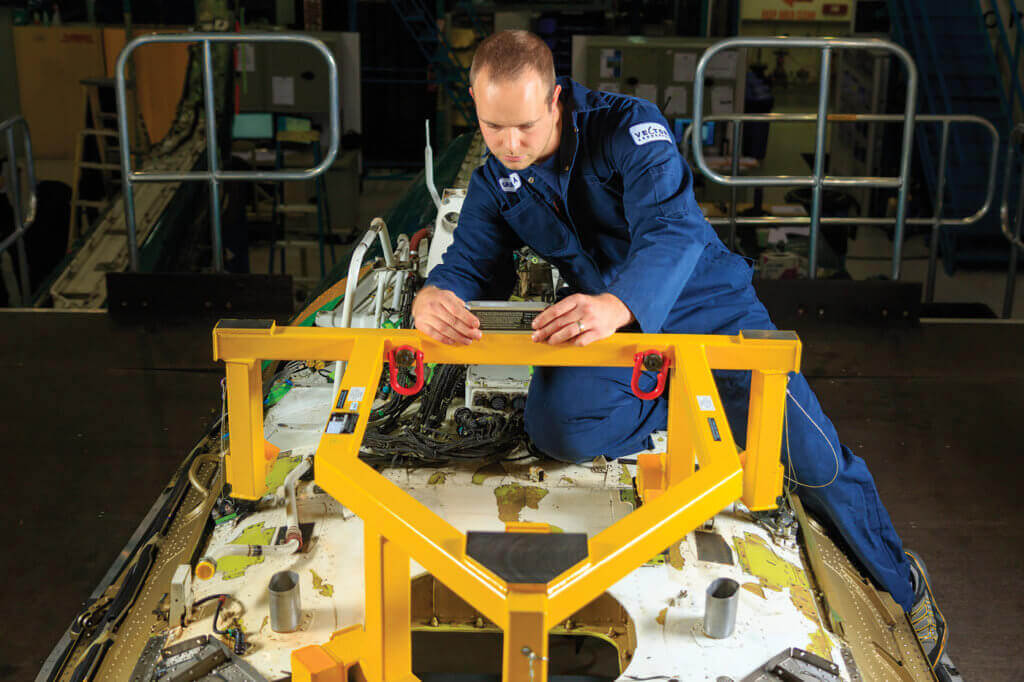
“An example was when one of our customers was bidding on a United Nations contract which required aircraft to have several types of equipment installed to be compliant,” said Moniz.
Vector applied its STC development program and produced STCs for cockpit voice/flight data recorder (CV/FDR), night vision imaging system (NVIS), helicopter emergency egress lighting system (HEELS) and dual GPS with helicopter terrain awareness and warning system (HTAWS), among other modifications. The customer won the contract.
“The key to a successful STC program is to fully understand what the pilot/operator and mission requirements really are,” said Moniz. “Next is to leverage past experience, product knowledge and multiple OEM [original equipment manufacturer] relationships to assess and present various options for the customer to consider.”
Vector has already taken on some of the most complex STCs, including the world’s first fully integrated FAA IFR-certified Sikorsky S-61 glass cockpit, commercially certified NVIS systems, and fully digital CV/FDR systems, applicable to the Airbus AS332 Super Puma family, among others.
In the past year, Vector has received FAA and European Aviation Safety Agency (EASA) certification for ADS-B installation in medium and heavy helicopters, including: Sikorsky S-76, Leonardo (formerly AgustaWestland) AW139 and Airbus AS332 series using L3 Lynx NGT-9000 technology.
The company also received FAA approval for light helicopters: the Airbus H120/EC120 B, H125/AS350 B3e, H130/EC130 T2 and H135/EC135 series, with the selection of either L3 Lynx NGT-9000 or Garmin GTX 345.
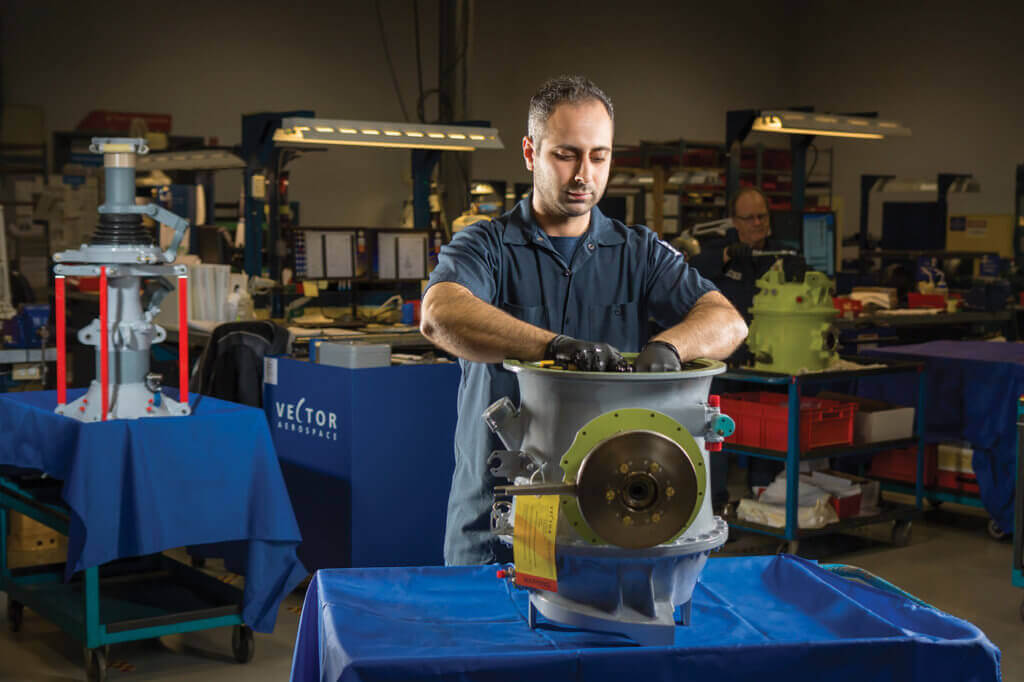
“This upgrade has generated significant customer interest in recent months, and we are actively supplying ADS-B kits and installation support to operators globally as the ADS-B regulatory compliance mandate date draws closer.”
The company recently received an approved model list (AML) STC for the AS332 series in addition to the Leonardo AW139 and Sikorsky S-76 series, along with EASA and National Civil Aviation Agency–Brazil (ANAC) approvals.
“We will continue down that path,” said Moniz. “And we just got our CV/FDR STC for the AS332 series both FAA and EASA approved.”
Moniz said as long as there’s a desire to implement new missions, systems, and safety requirements in helicopters, Vector’s STC work will continue.
“It will be an active ingredient in Vector’s growth.”
If you would like to see your company featured in Insight, contact Derek Kast at derek@mhmpub.com.




